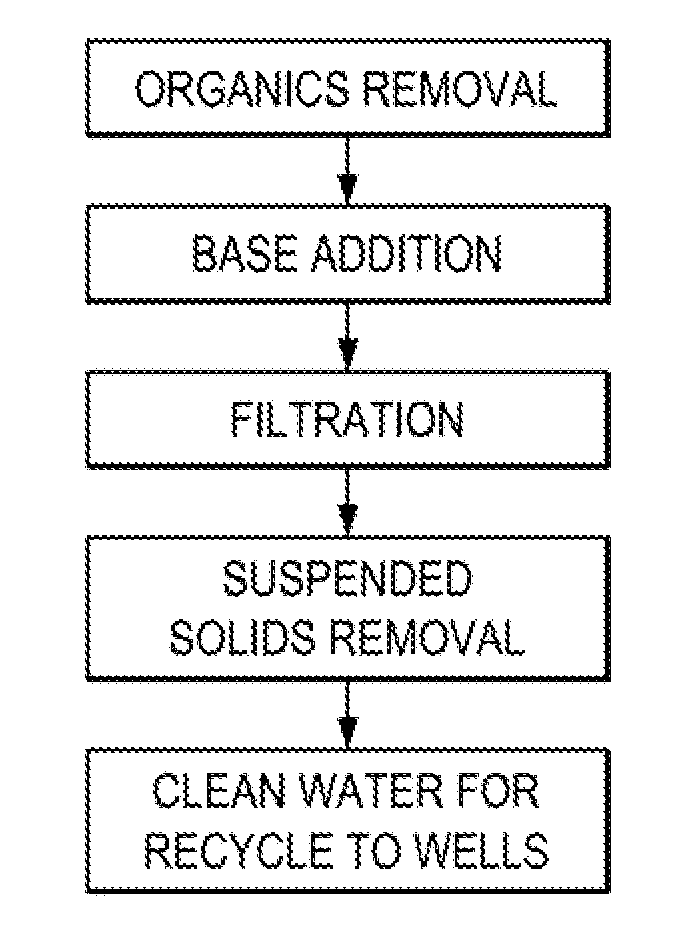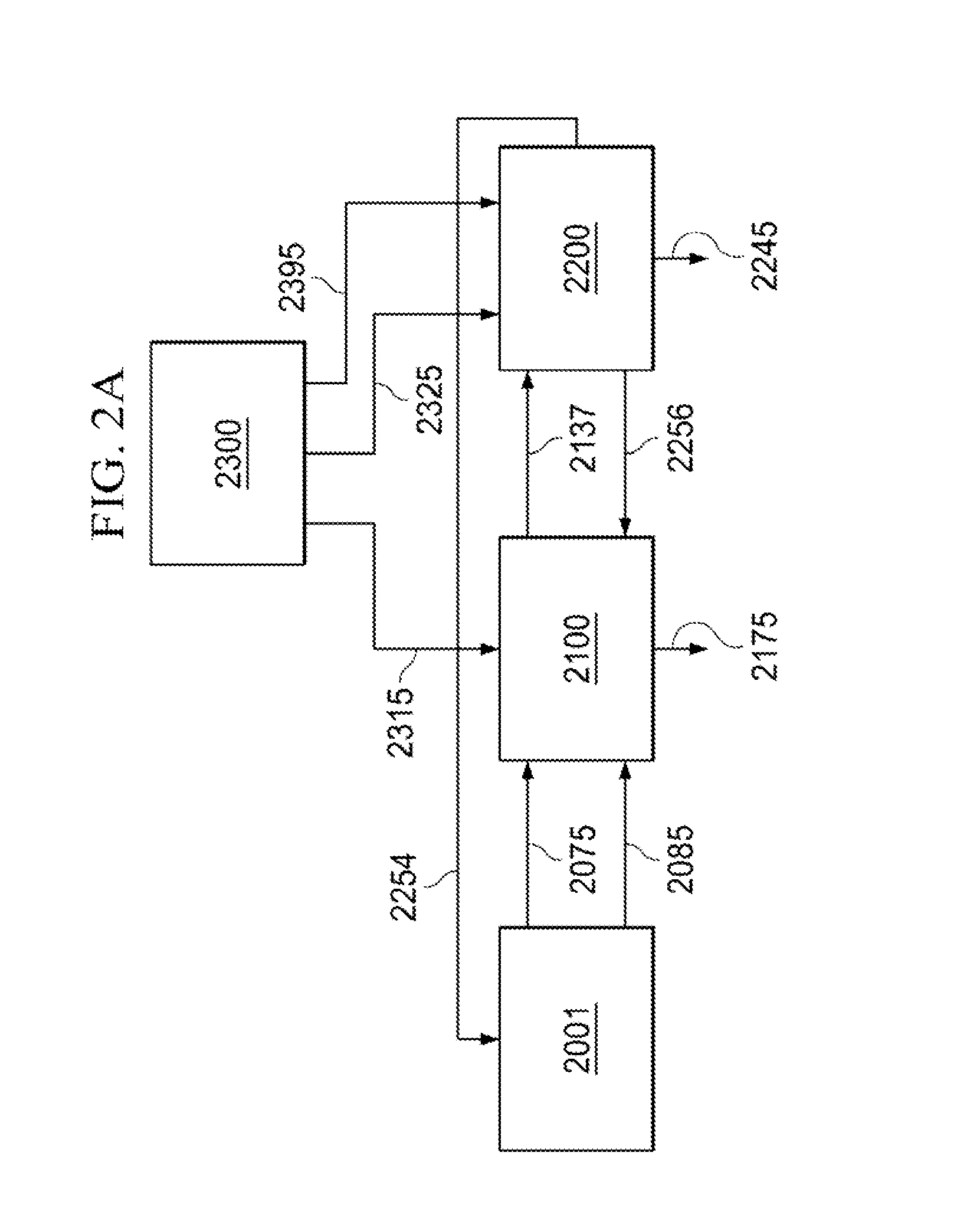Systems and Methods for Purification and Recovery of Fracking Water
a technology of purification and recovery and fracking water, applied in the nature of treatment water, multi-stage water/sewage treatment, borehole/well accessories, etc., can solve the problems of increasing the consumption of fresh water and the production of wastewater with significant concentration, the current recovery and disposal methods may be costly, and the fresh fracking water used to perform the procedure comes in contact with salt and minerals, so as to reduce energy expenditures
- Summary
- Abstract
- Description
- Claims
- Application Information
AI Technical Summary
Benefits of technology
Problems solved by technology
Method used
Image
Examples
example 1
Water Purification Process
[0057]Treating a contaminated water composition may comprise:[0058]contacting the contaminated water composition with an aqueous solution of 0.1-7% permanganate ions by weight;[0059]contacting the water with an aqueous solution of carbonate ions to increase the pH of the water to between 8.5-10.5[0060]contacting the water with an aqueous solution of hydroxide ions to increase the pH of the water to between 11-14 to induce precipitation of solids[0061]separating the water and precipitated solids into a decanted water fraction and wet solids fraction using a settling tank, further separating the wet solids using a centrifuge into a supernatant liquid and dewatered solids, and recycling the supernatant liquid to be contacted with said aqueous solution of carbonate ions[0062]exposing said decanted water fraction from the settling tank to filtration in a sand filter to remove suspended solids[0063]contacting said decanted water fraction with an aqueous hydrochlo...
example 2
Water Purification Performance
[0075]A treated water composition may be prepared according to the process of Example 1. Treated water recovered from the purification method may have substantially greater than zero silica content and may meet the EPA drinking water standard in every aspect with the possible exception of chlorides and total dissolved solids content as shown in Table 2. below:
TABLE 2Prophetic Example compared to EPADrinking Water Standard (in PPM)MaterialEPA StandardProduct WaterBarium2Iron0.3Total Nitrogen10Chloride250>250SilicaN / A>1Total Dissolved Solids (Not including250>50Na or Cl)Gross Alpha (pCi / L)10Total Ra (pCi / L)5
example 3
Water Purification Process and Performance
[0076]Contaminated fracking water was treated as follows.[0077]An initial sample of 1200 mL of unfiltered frac water had an initial pH of 7.23. This initial sample was black in color.[0078]13.7 g of Na2CO3 (s) was added and stirred for 5 min, the resulting solution was a light gray-brown color with a pH=10.39.[0079]24.7 g of 50% NaOH was added and stirred for 5 min to give a pH=13.02, the mixture was light gray in color with suspended particles which can be seen while mixing.[0080]Agitation was ceased and the particles appeared to agglomerate.[0081]The mixture was filtered using Whatman 3 paper (6 μm), the filtrate was very clear and had a yellow tint.[0082]35.7 g of 36% HCl was added to the filtrate to lower the pH to 7.61, which turned the filtrate a dark green color.[0083]20 g of activated carbon was added to the neutral filtrate solution and stirred for 5 min[0084]This mixture was filtered twice to remove all the suspended carbon (Whatma...
PUM
| Property | Measurement | Unit |
|---|---|---|
| temperature | aaaaa | aaaaa |
| pH | aaaaa | aaaaa |
| pH | aaaaa | aaaaa |
Abstract
Description
Claims
Application Information
 Login to View More
Login to View More - R&D
- Intellectual Property
- Life Sciences
- Materials
- Tech Scout
- Unparalleled Data Quality
- Higher Quality Content
- 60% Fewer Hallucinations
Browse by: Latest US Patents, China's latest patents, Technical Efficacy Thesaurus, Application Domain, Technology Topic, Popular Technical Reports.
© 2025 PatSnap. All rights reserved.Legal|Privacy policy|Modern Slavery Act Transparency Statement|Sitemap|About US| Contact US: help@patsnap.com



